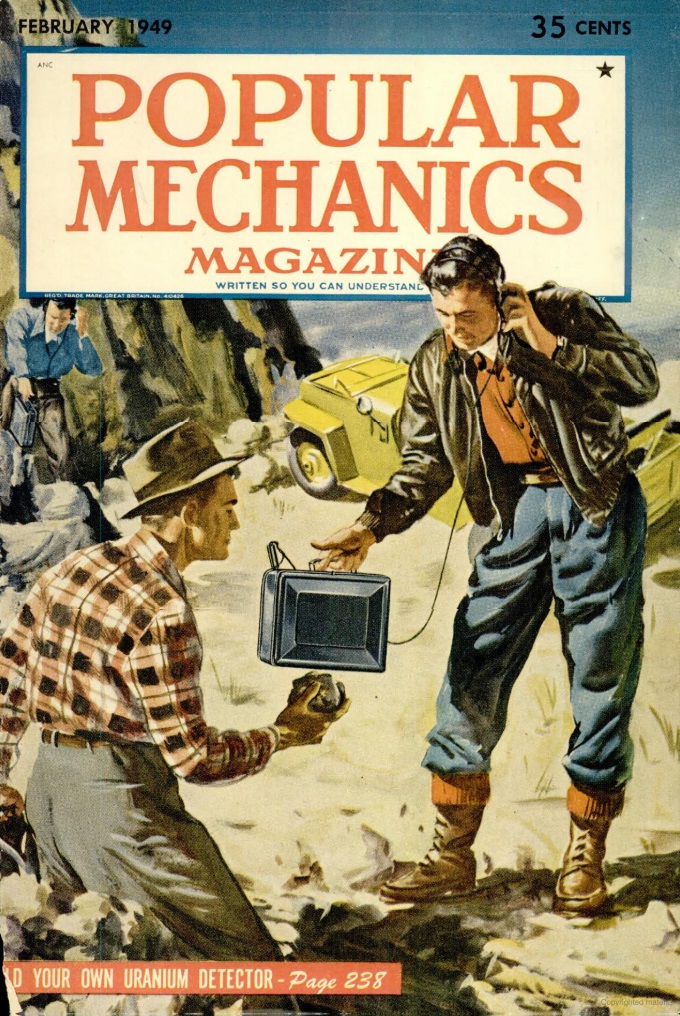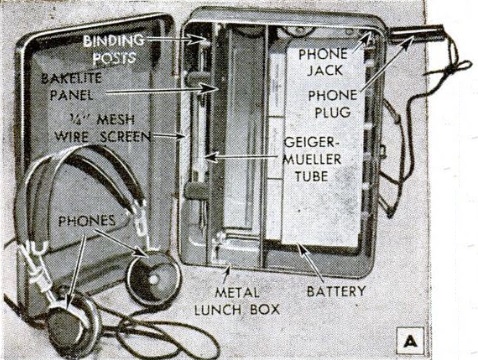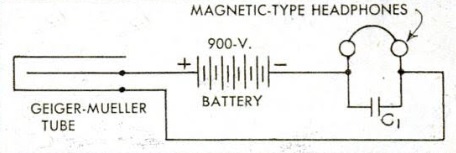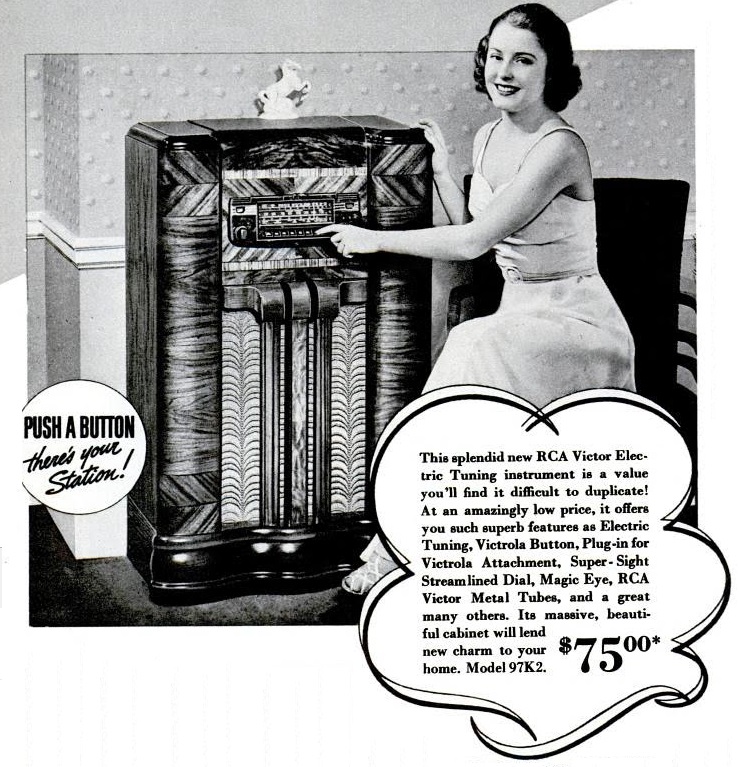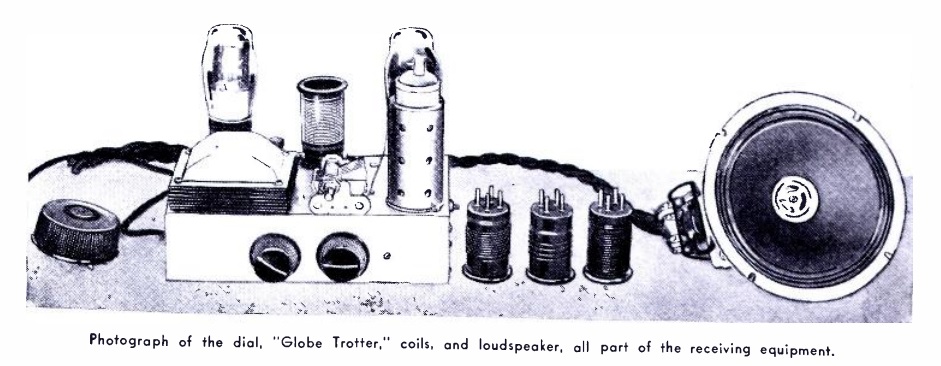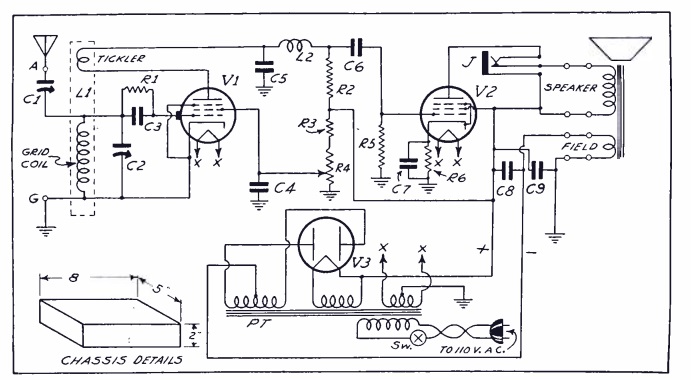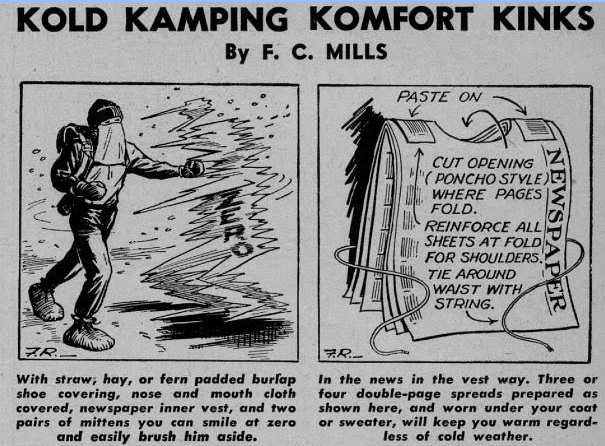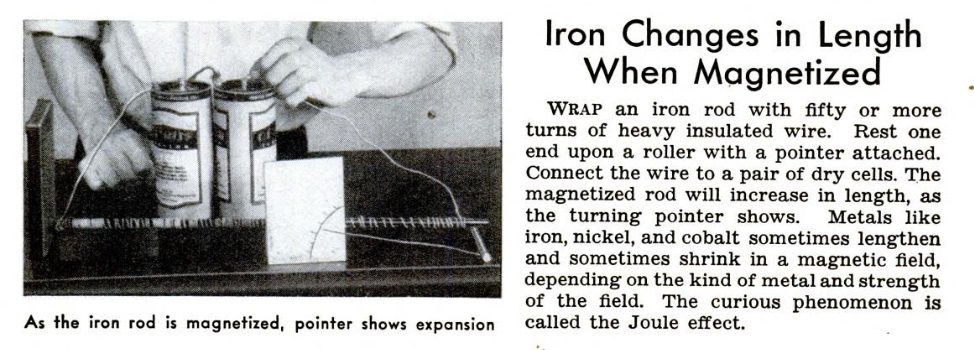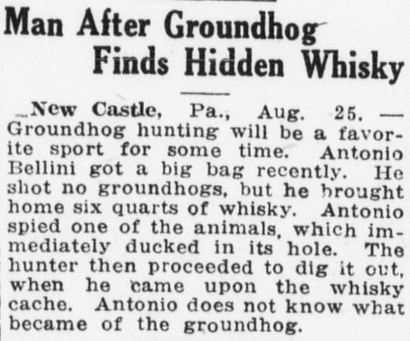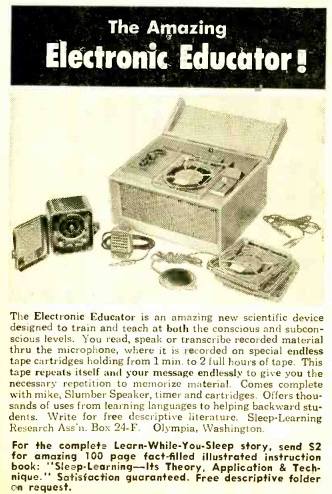 The February 1959 issue of Popular Electronics carried this handy device to facilitate sleep learning. As a youth, my attempts at sleep learning were frustrated by (in addition to the fact that it apparently doesn’t work) that the only tape recorder I owned had a very limited amount of record time. So chances are, the tape would have played to completion before I even fell asleep. And it would play only a single time.
The February 1959 issue of Popular Electronics carried this handy device to facilitate sleep learning. As a youth, my attempts at sleep learning were frustrated by (in addition to the fact that it apparently doesn’t work) that the only tape recorder I owned had a very limited amount of record time. So chances are, the tape would have played to completion before I even fell asleep. And it would play only a single time.
One of these devices would have solved that problem. The exact details (as well as the price) were lacking, but the Electronic Educator, sold by the Sleep Learning Research Association of Olympia, Washington, allowed the use of a continuous tape cartridge with between 1 minute to 2 hours of tape. In other words, the lesson would play all night, and you would wake up having mastered the material.

